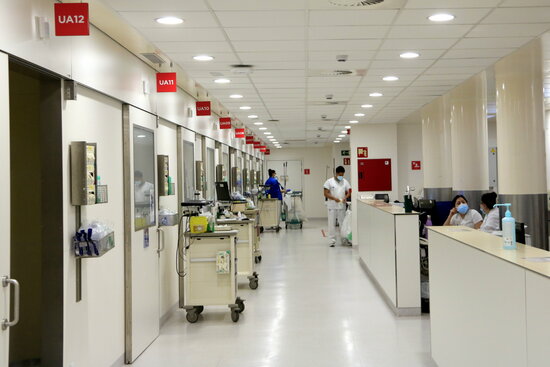Bronchiolitis infections in children surpass 2019 peak a month earlier
Incidence rate rising quickly among infants

The bronchiolitis incidence rate among children under age 4 in Catalonia has already surpassed the peak seen in 2019, before the pandemic hit, and is beginning to put a strain on pediatric health services.
There were 477 children in this age group with bronchiolitis, a kind of respiratory tract infection, per every 100,000 people in week 46 of 2022, from November 13 to 20, up from 350 the week prior according to Catalonia's Infections Surveillance Information System (SiViC).
Meanwhile, in 2019, infections peaked at 387 in week 51, about a month later than this year.
The increase has been even more notable among children under the age of 1, where the incidence rate jumped from 1,465 to 1,921 in a week.
Higher rates among general population
Bronchiolitis rates are also higher now than before the pandemic among the general population, with a current rate of 20 for every 100,000 inhabitants versus 6 the same week three years ago, when the rate eventually peaked at 19 per 100,000 inhabitants.
A year later, in 2020, there were only 2 people with the disease per 100,000 inhabitants as Covid restrictions were still widespread, while the same week last year there were 12.
Catalan Society of Pediatrics recommendations
The Catalan Society of Pediatrics advises parents and infants to avoid contact with respiratory secretions, wash their hands often, and to not smoke indoors to prevent the spread of the disease.
People with cold or fever symptoms should avoid contact with children, especially those under 4.
Bronchiolitis mainly affects 2- to 6-month-old infants, according to the Catalan Society of Pediatrics, which says that most patients are under 2 years old.
Its most common symptoms include nasal discharge, fever, and cough, which can lead to respiratory difficulty. The illness usually lasts 7 to 10 days, and parents should be alert if their child has a persistent cough, difficulty breathing, or does not eat much.